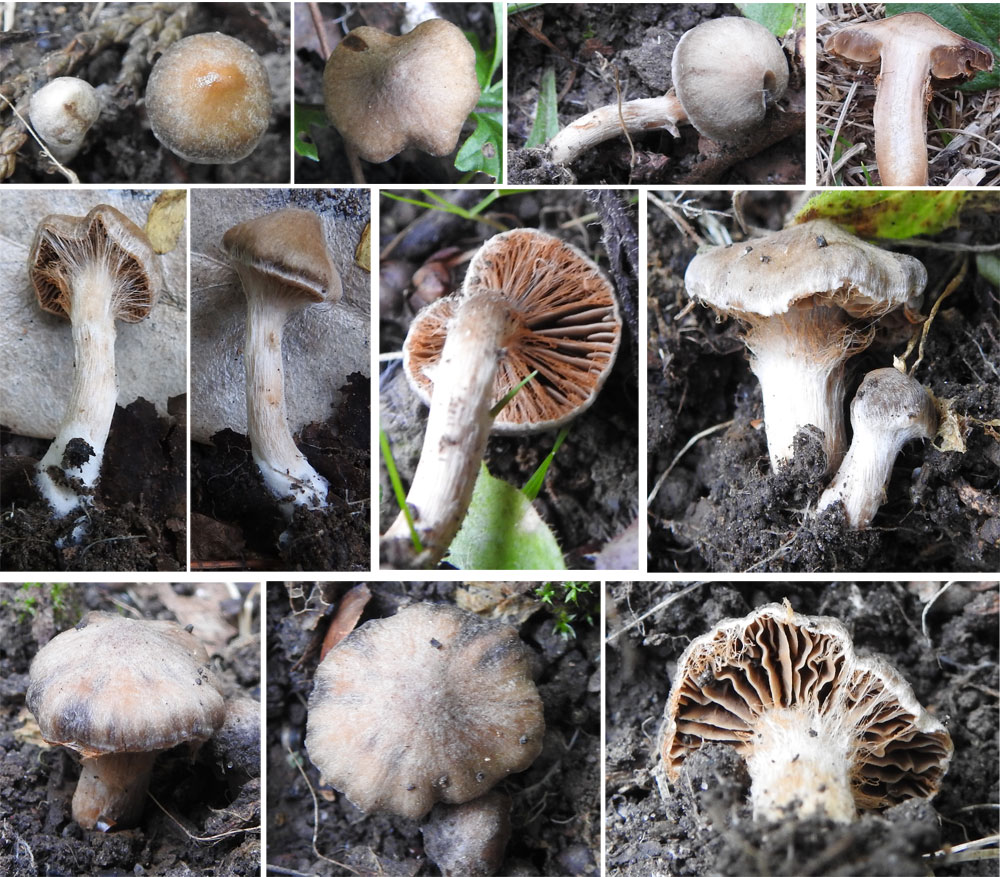
Months observed
An informal survey of the plant and animal life living in or visiting the grounds of Pointfield, Kelso since 2015
Fungi

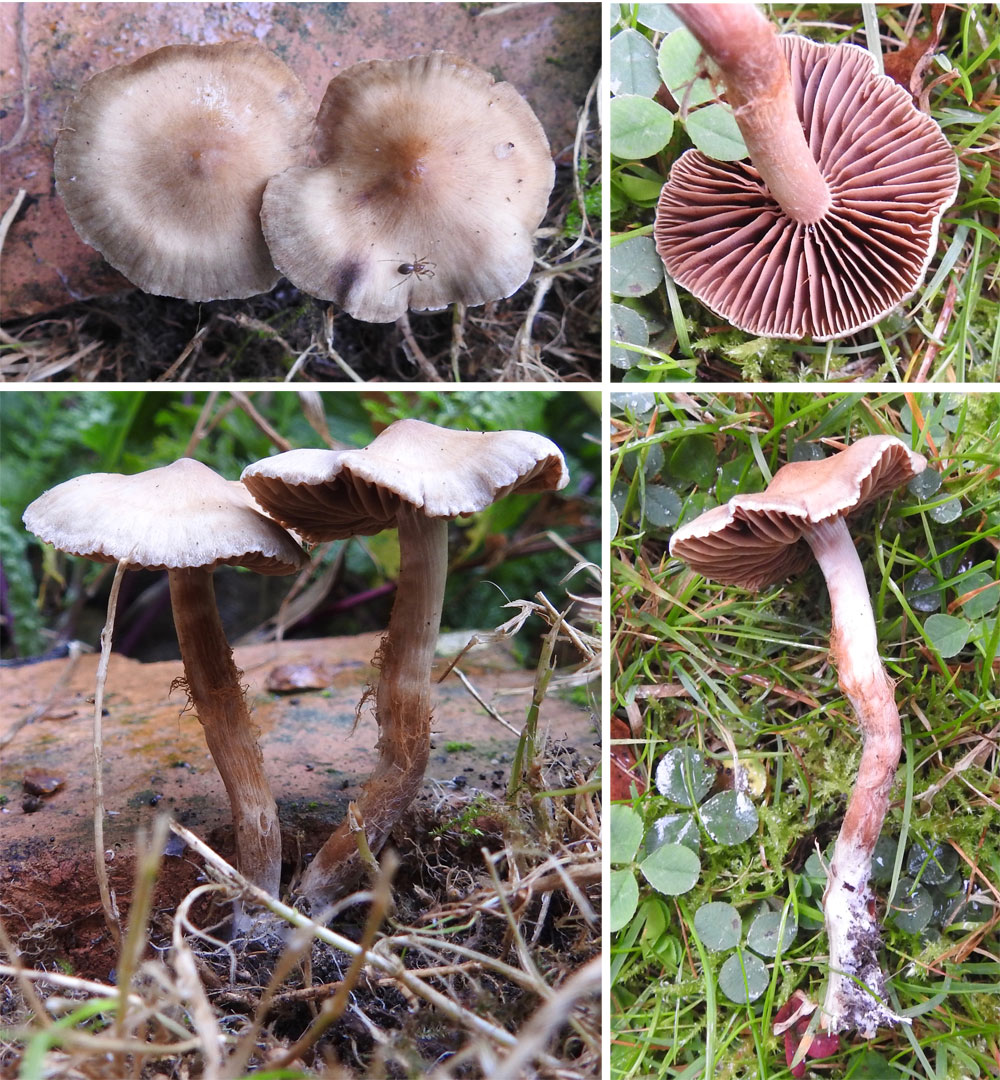

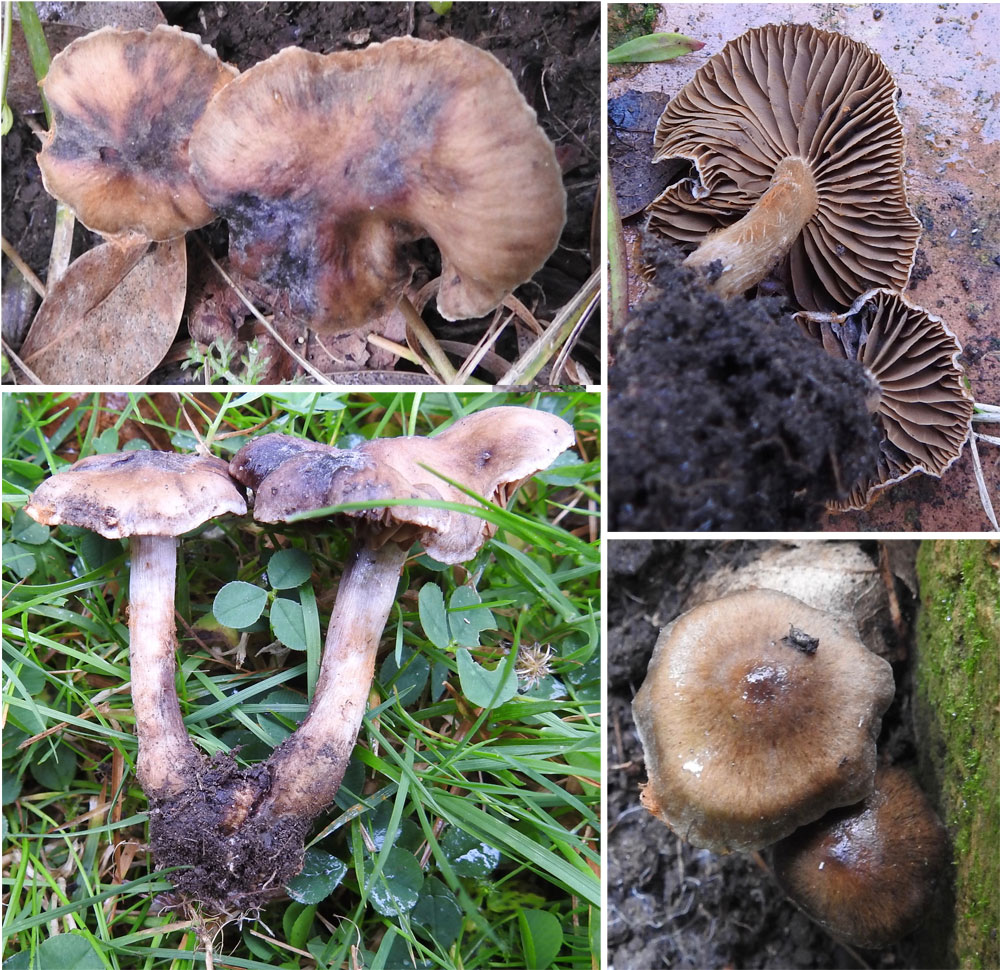
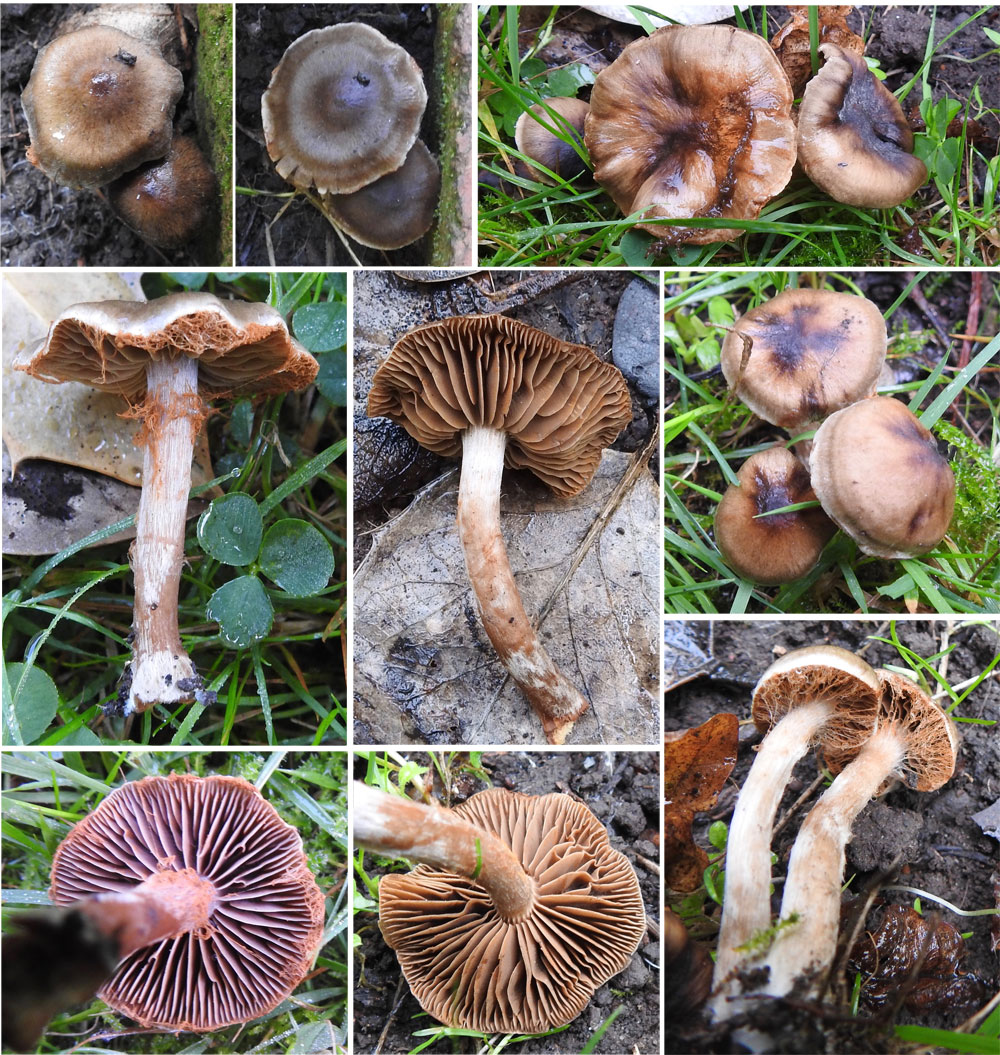
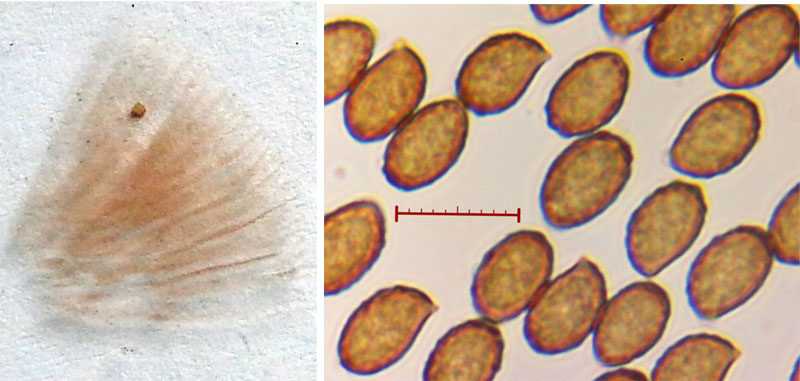
Cap usually less than 40 mm in diameter (one to 45 mm). Dry-surfaced (not slimy). Initially domed but opening and becoming flatter with a distinct central umbo. When moist a dark purplish brown, especially centrally, quickly drying to a beige, typically radially mottled lighter and darker. In many larger individuals, concentric zonation evident, with darker inner and outer zones. Surface texture of fine radial fibres. Gills adnexed, widely spaced, in three cycles; a pinkish-violet shade when fresh but turning a dull grey; primary gills widely spaced. Veil. Gills in developing bodies covered in a partial veil of fine threads, lower threads white and upper threads an orange-cinamon. Orange-cinamon threads typically remain on upper part of stem and initially around rim of cap but can be lost from stem leaving just blotchy colour patches. Stem to 65 mm in length, 4 mm diameter; pale white and fibrous in small specimens, but in fully developed forms, the white fibrous part of the stem is restricted to the base, the middle section has orange-red fibres and the upper part of the stem is pale olive-grey without fibres but with vertical banding; no distinct ring. Slight violet tinge to top of stem in some. Base of stem may be very slightly wider but not expanded into an obvious bulb. Chemical reaction. Cap turns immediately a dark red-black with KOH. Spore print a rather pale orange-brown. Spores brown and pip-shaped (amygdaloid) without germ pore; surface finely but distinctly granular; size 7.9-9.0 x 4.7-5.7 um, mean 8.5 x 5.1 um, n = 18. No cheilocystidia, no pleurocystidia, no caulocystidia found. Cap flesh thin, surface of tall, close-packed cells.
Under oak tree at edge of flower bed.